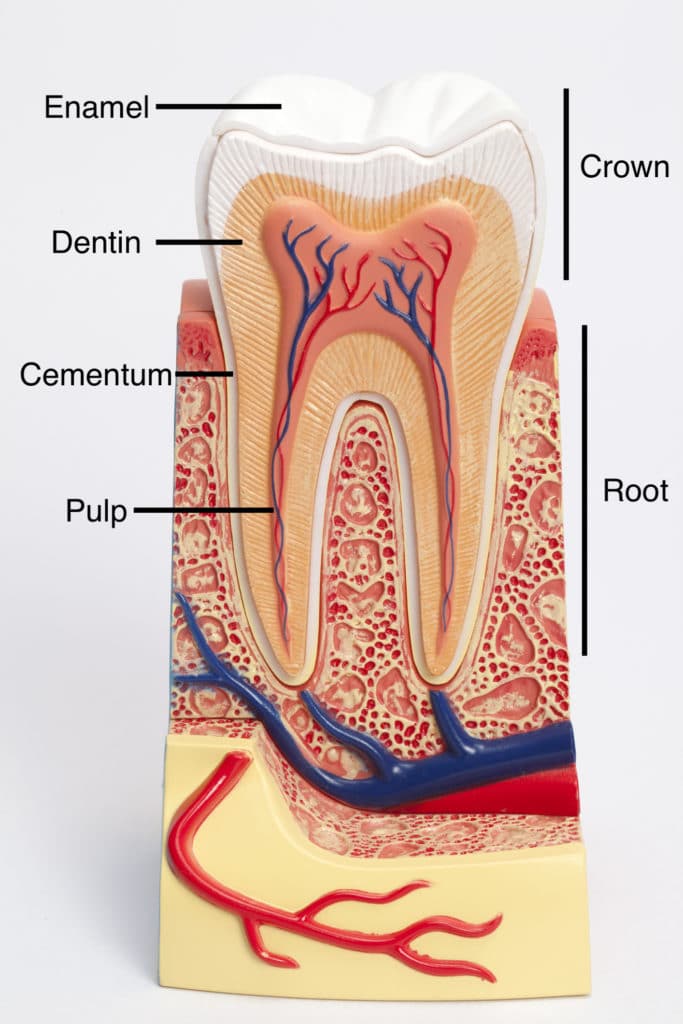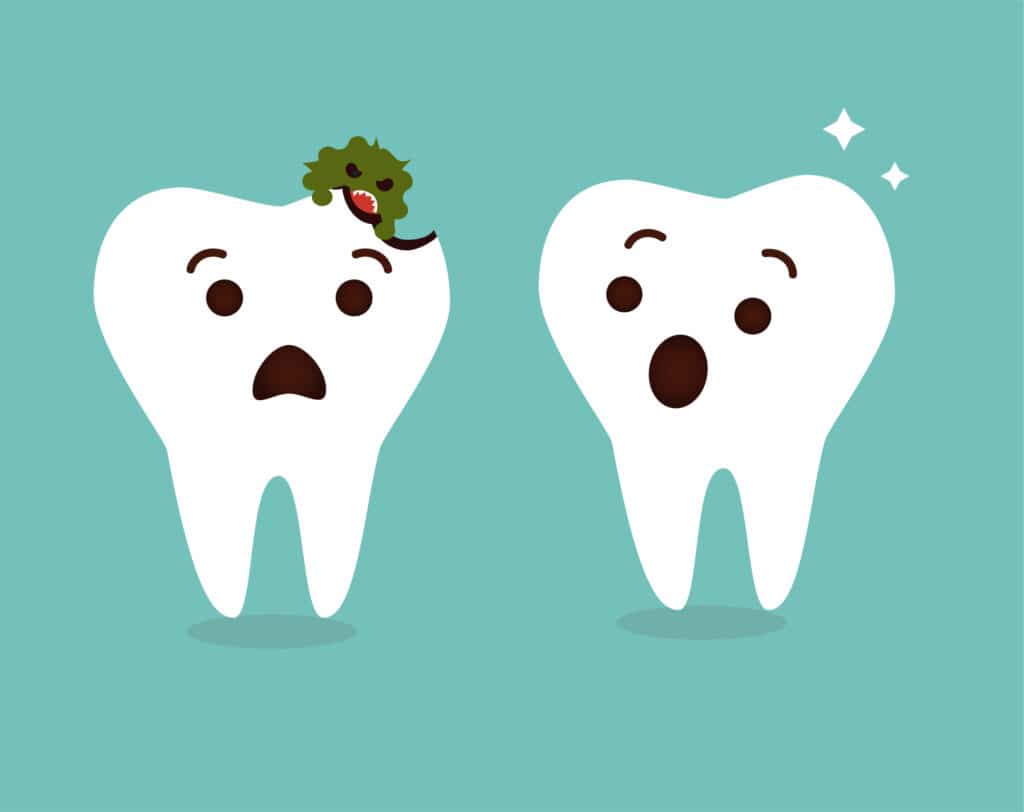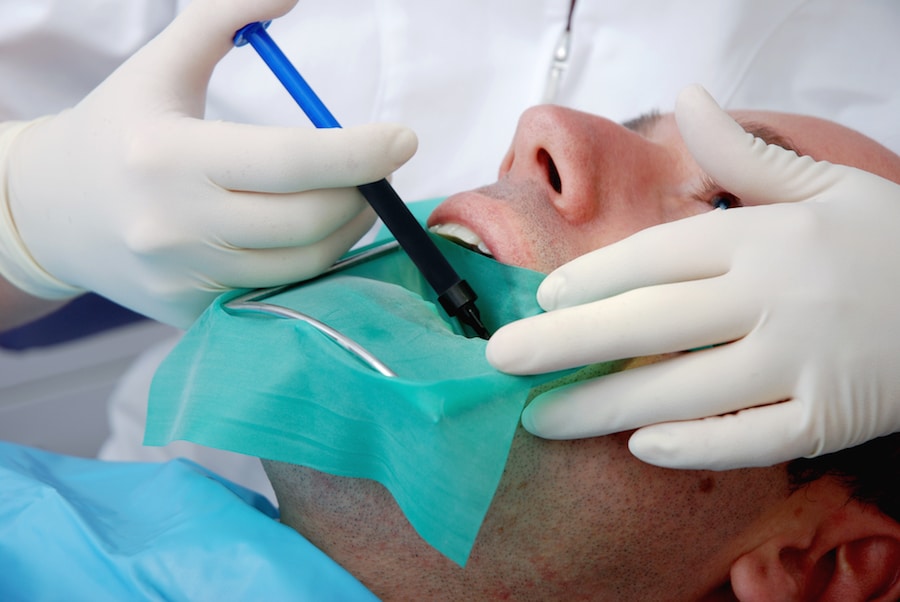If you or a loved one has discolored teeth, it can be alarming. If you notice your teeth or a loved one’s teeth turning gray, it might be caused by a few different issues. Let’s take a look at how gray teeth happen and how to prevent it.
Tooth Discoloration

Healthy teeth are naturally an off-white color. Tooth enamel, which forms the protective outer layer of the tooth, is translucent and white-tinted. Since it is somewhat see-through, this allows you to see the tissue beneath it. Dentin is the living structure beneath the tooth, which is a yellowish color. This means, teeth are not perfectly white. If your teeth are a bit yellowish in color, there’s no need for concern. However, if your teeth are black, gray, blue, darker yellow, or brown, this may be a sign of a more serious issue.
Tooth discoloration can be a sign that the tooth is not healthy. It can indicate that blood flow to the tooth’s living tissues has been disrupted, that tooth decay has damaged the tooth, or that another incident has damaged the tooth. Sometimes, these situations can cause teeth to appear gray or blue-gray. Let’s take a look at these situations in more detail.
What Causes Gray Teeth?
Tooth Decay
Tooth decay is one condition that can cause teeth to appear gray in color. Bacteria build up on teeth over time and feed on the sugars leftover from foods and drinks. As these bacteria live and multiply, they produce acids that damage teeth. If these bacteria damage teeth extensively, they can eat away at tooth enamel and damage the tooth pulp underneath. This can cause the tissue within the tooth to die. As the tissue dies, it may discolor the tooth with a dark yellow, brown, black, or gray tone.
Trauma
A hit to the face can also cause gray teeth. Just like any other living part of your body, your teeth need blood flow to stay alive. If the blood flow to the inner structures of your teeth are disrupted, it can cause the tooth to die.
The root canal of the tooth roots contain the blood vessels and nerves which keep the teeth alive. If you are struck in the jaw, it can damage the teeth roots and block the blood vessels. Without blood flow, the tissue within the tooth will die. This can then cause the tooth to appear gray, black, or brown in color.
Tetracycline
Tetracycline is an antibiotic used to treat many different types of infections. Though this medication can be very helpful for fighting infections, it also has some side-effects. One of these side-effects occurs in young children. If children take tetracycline while their teeth are developing, it can cause their teeth to be discolored. This can also occur if pregnant parents take tetracycline. However, this typically only affects children’s baby teeth.
Root Canal
A root canal procedure is used to clean a tooth that has been heavily damaged by decay and bacteria. During this procedure, the dentist removes affected tissue within the tooth, and removes the bacteria from the tooth root. In some cases, the tooth may be discolored after the root canal. The cause of this is not completely clear, however it may occur if the damaged tissue is not completely removed. Or, the sealant used to protect the root canal area might also cause staining.
Dental Restoration
In some cases, a dental restoration can also cause a tooth to appear gray. If the tooth has been damaged by decay, your dentist will remove the decay and fill the cavity with either a white or silver amalgam. This prevents the decay from spreading, and helps to keep the rest of the tooth healthy. However, if a large part of the tooth is filled with silver amalgam, it can make the tooth appear gray, even if the silver filling is not on the outside, visible part of the tooth.
If you or a loved one has a gray tooth, you should make an appointment with your dentist as soon as possible. A gray tooth may mean that part of the tooth is dying, but this can be fixed. If you live in the Las Vegas area, make an appointment with a BDG dentist today.


